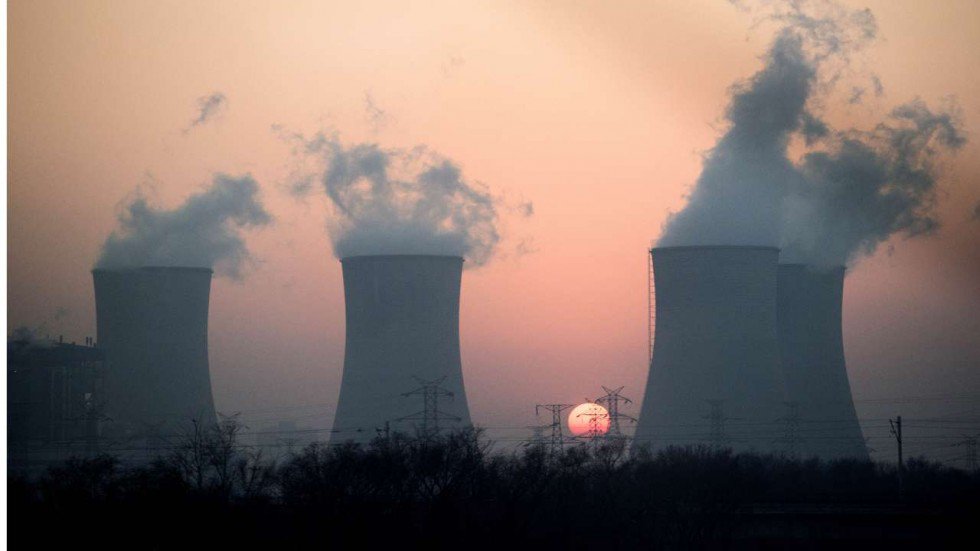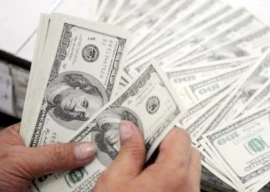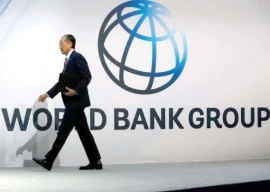
We would like to raise and discuss some issues in Nepra’s tariff procedures and present a case study of coal power tariff, particularly of coal jetty costs that have been approved recently.
It has been apprehended that a cheap energy source may lose its attractiveness, if add-on costs are not handled properly. Fortunately, the tariff is due for renewal after completing its two years; it is perhaps the right time to have discussion on some limited aspects.
Despite energy price fall, China investors allowed higher returns
Coal power tariff for 1,300MW plants, being built these days in Sindh and Punjab, as per Nepra determination in 2014 is Rs8.01 per unit. This tariff was based on free on board (fob) coal rate of US$90 per tonne and an exchange rate of Rs97 per US dollar.
These days, the coal cost is around $50 per tonne, which will reduce the energy cost component from Rs4.3013 per unit to Rs2.967. Thus, adjusted new tariff would be around Rs6.37 per unit; may be slightly more due to exchange rate difference of 11%.
This should be good news for consumers and the economy. Low coal prices are expected to prevail in the medium term, say 10 years, along with low oil prices. Decrease in coal demand and increase in renewable energy is going to put additional pressure on coal prices.
Coal jetties
However, there is a threat that additional add-on costs may nullify or reduce these gains and spoil the tariff. There are add-ons like cost of railway transportation to Punjab, port charges and jetty cost.
A difference of one paisa in tariff results in an additional payment of $1 million per year in case of one plant only.
Coal jetties are required to unload imported coal from ships. Jetties/terminals are required even in surface transportation of coal. There are three issues (one already discussed above) on which there still is confusion or controversy.
One still does not know as to what would be the impact of railway transport of coal on the tariff. In a public hearing, Pakistan Railways (PR) maintained that Nepra did not have jurisdiction on the railway transport tariff.
Apparently, the issue has not been resolved yet as Nepra has kept quiet on it. On the other hand, PR has not revealed its transportation rates.
We will focus on jetty costs, both capital and operating costs. Nepra has awarded a tariff component of $9.86 per ton based on a capital expenditure (capex) assumption that is quite contentious as we shall demonstrate.
It has also allocated 10% of fob coal costs as other costs, which are presumably the operating cost of the coal terminal and may be incidentals. This also works out to be another $9 per tonne (based on the fob coal costs assumed in Nepra’s tariff determination).
This adds up to a good $18.86 per tonne, more than the freight cost of bringing coal from Indonesia or South Africa. This is excessive.
Nepra has been confused on this issue from the beginning and the stakeholders could not guide it. There is a limit on what stakeholders can provide to Nepra.
First, there is vested interest not to tell the real data. Secondly, coal power is new to Pakistan and there is a lack of knowledgeable people on the subject. Free data and info has its limitation. Expert third-party consultants have to be engaged for a true assessment of costs. Competitive quotations can be a charade as well.
Capex estimates in cost-plus tariff should always be based on design and BOQ. Expert consultants should be involved in preparing estimates against which competition is to be held.
We have serious reservations about this as the following data and discussion would demonstrate.
Reference tariff
Nepra based its reference tariff of $9.86 per tonne by extrapolating the AES Jetty data of 2009. It was a totally different type of offshore jetty in which 5-7 km of trestle had to be made under water foundations, which is always very expensive.
'Thar coal mine set to become Pakistan’s biggest industrial site'
Also, AES Jetty was designed for very large ships, carrying three times the coal carried by Panamax vessels.
No one could imagine that Nepra would take a highly ill-advised (to put it mildly) step of allocating the same costs as these would occur in AES and Gadani. The coal jetty being built as part of the power plant is a much simpler and cheaper version.
Nearby, PIBT is in the process of commissioning a common purpose bulk terminal, which will provide coal handling services to other power plants. For strange reasons, Nepra ignored data from this actual and comparable plant and used the inappropriate and irrelevant AES project data which was also out of date.
PIBT terminal, which is four times the size of Sino-Hydro Coal Jetty (16 million tons per annum (mtpa) vs 4.5 mtpa), is being built at a cost of $285 million vs $240 million for Sino-Hydro. Reportedly, PIBT tariff is $4 per tonne as opposed to $9.86 per tonne for Sino-Hydro.
In India, coal terminals of twice the size of Sino jetty have been made in $30-60 million range. In the kind of budgets approved by Nepra, very large coal terminals in the range of 30-40 mtpa, 6 to 10 times larger in output and capacity, can be built.
Adani and Essar have built these kinds of projects for 5,000MW or more coal power plant complexes. In India, tariff for a typical coal terminal is $4 per ton (total including fixed and variable), out of which 40% ($1.6) is the capital charge rate and $2.5 is the O&M cost. International rates of coal terminal are around $2-4 per tonne.
Railway coal terminal tariff in India is $1 per tonne each on dispatch and receipt. These are all comparable numbers.
However, Nepra is awarding or has awarded $9.86 per ton as capital charge ($240 million capex) of jetty and $9.34 per ton as O&M costs, totalling a hefty $19.20 per tonne.
The difference is too much to be left unexamined thoroughly, once again.
Dredging costs
I am not sure, if dredging costs have been included in jetty capex. Let dredging included in port charges to be directly collected by the port authority such as PQA from the ship operator.
Dredging is one area which is universally seen with a lot of scepticism and very rigorous mechanism should be in place through third-party involvement.
The record and proceedings that Nepra has publicly shared does not show any serious consideration or investigation with respect to either dredging or otherwise.
At first, a reference tariff was announced by Nepra using data of an incomparable project and accurate determination was left for later. And later when the time came for detailed scrutiny, no serious investigation was made to improve upon it.
A $240 million investment being dealt with such flippancy is not expected of Nepra. Clearly, transparency requirements have not been adequately met in the process of determination of cost-plus jetty capex.
Move to tap Thar coal reserves in line with global trend
Neither Nepra, nor the company has published requisite information. The evaluation report circulated does not provide even salient data on cost elements and quantities, nor did Nepra reveal the requisite data.
Nepra would be well advised to re-examine the case by involving independent experts and help remove confusion and controversy in this respect.
The writer has been member energy of the Planning Commission until recently.
Published in The Express Tribune, March 27th, 2017.
Like Business on Facebook, follow @TribuneBiz on Twitter to stay informed and join in the conversation.


1727778647-0/diddy-(16)1727778647-0-165x106.webp)

1732014631-0/BeFunky-collage-(71)1732014631-0-165x106.webp)












COMMENTS (2)
Comments are moderated and generally will be posted if they are on-topic and not abusive.
For more information, please see our Comments FAQ